My first blog post appeared in January, 2013. I had so much to say then, so many thoughts about gardens and garden design, that for many years I posted weekly.
Recently my posts have been fewer and farther between, not because I have less to say but because other work has been more pressing. I haven’t lost the desire to share my ideas, ruminations and photographs, though, so late last year, I began posting regularly on Instagram.
For about three months, the first thing I’ve done almost every morning is to share a photo of a garden gate. I hit upon this theme by accident and have continued, since it matched changes in my personal situation. Entering a new phase in my life, walking through gates, even virtually, seemed emblematic. And very positive.
Yesterday I posted the 100th image of a garden gate and announced the end of the series. The conclusion comes along with regret — I still have a handful or two of garden gates that I could post. Searching through the library of photographs I’ve taken has been instructive. Before I started, I hadn’t appreciated how many different types of gates there are or how different they can be in style, material and purpose.
Some, like this gate from Hatfield House in Hertfordshire, are magnificent works of art, designed to impress.

Erected to mark the visit of Queen Victoria in 1846, the gate includes delightful vignettes of a bucolic couple, cavorting amid iron curlicues …

… above mermaids blowing conch shells.

Was the Queen impressed by the gate, as I’m sure she was meant to be? Did she feel honoured that it was built to mark her visit, or did she take it as her due? I haven’t searched the records, so I really don’t know.
But I do know that, for me, the best gates are those designed to say something meaningful about the garden itself. The hand-forged details on the entry gate at Mt Cuba, a garden in Delaware that specializes in native plants, illustrate that focus with panache.

A close-up of the gate shows oak leaves surrounding four-petalled flowers, perhaps one of the native plants that were the favourite of Pamela Copeland, the woman who established what is now the Mt Cuba Foundation.

Not all garden gates are as impressive. Some, like this bamboo construction from the Bridge Garden on Long Island, are lovably quirky.
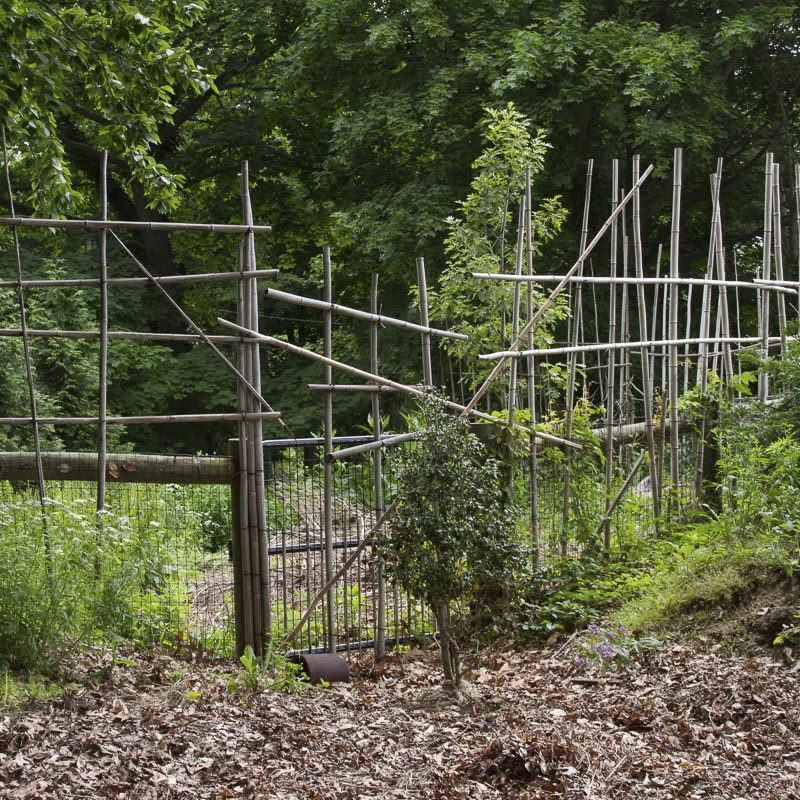
The wire at the base of the fence is designed to keep out rabbits while the stakes probably ward off deer.
Some, like this Anatomy of the Black Swan gate at the entry to the English garden Througham Court, illustrate ideas. Here, the idea is an economic theory about the impact of rarity and unpredictability, topics that the garden encapsulates in thought-provoking ways.

Some gates send messages that may be unintended. Go away, says this one.

Villa Gamberaia, the garden behind this gate, is actually quite welcoming. Entry is by the tiny door on the left of the photo.
Look at me, says another.

The colour is as strong as the foundations of this massive gate must be.
Apart from white, colours aren’t used very often on garden gates but they can send messages very effectively when they are. The shade of green in the gate above is striking, as is the garden where I saw it, a garden that struts with colour. Blue gates appear occasionally, as in this one at Old Westbury, a garden on Long Island designed in the English style.
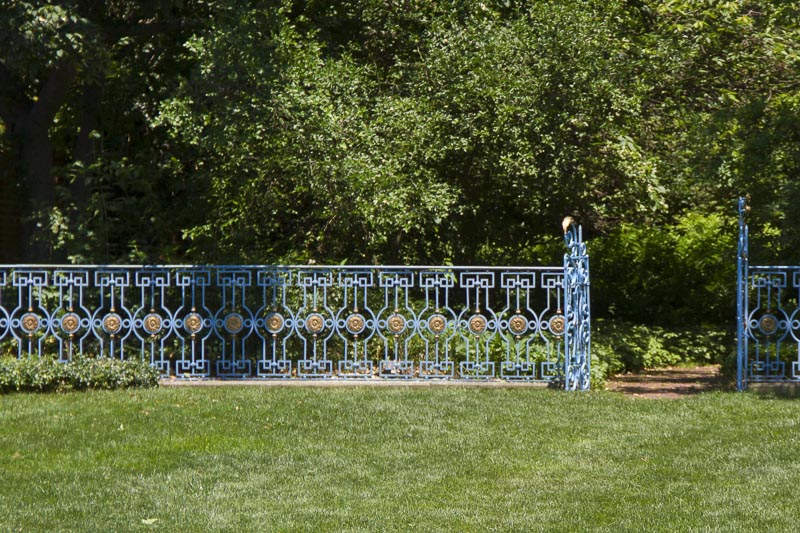
Red gates are scarce. This one, at Broadwoodside in Scotland, repeats the colour used on doors and windows of the house, reinforcing the inventiveness displayed throughout the garden.

Garden gates appear more frequently in the U.K. than in other countries, or so the photos in my library suggest. This may reflect the number of gardens I’ve visited there or it may say something essential about how people view their gardens: as private spaces to be invited into or as areas open to neighbours. (Are unfenced yards and un-gated gardens like the one below, where a thin flower border separates one property from its neighbour, found only in North America?)
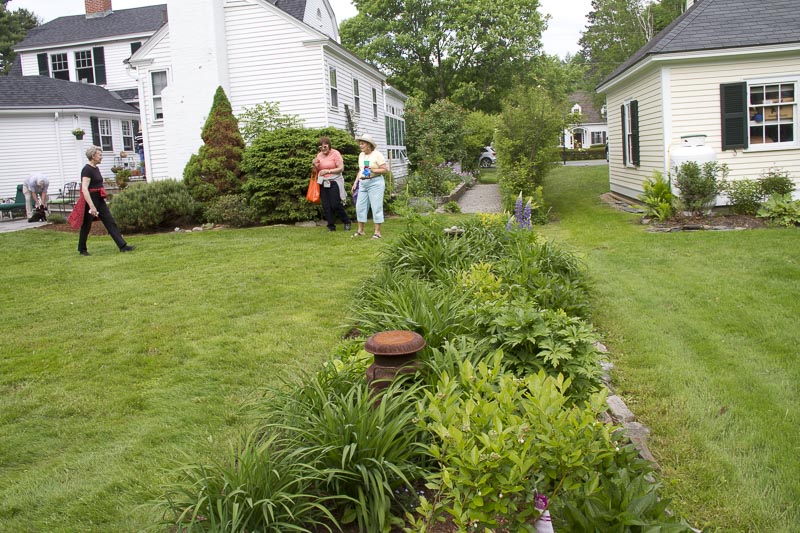
This small town garden is in New Hampshire.
Wherever they may be, gates serve specific purposes. Sometimes they separate a garden from the surrounding countryside.
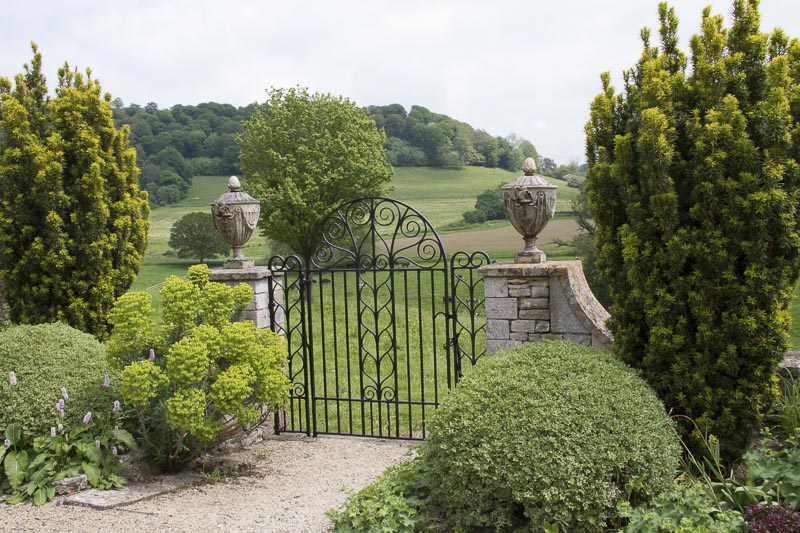
Sometimes they close it off to other people.
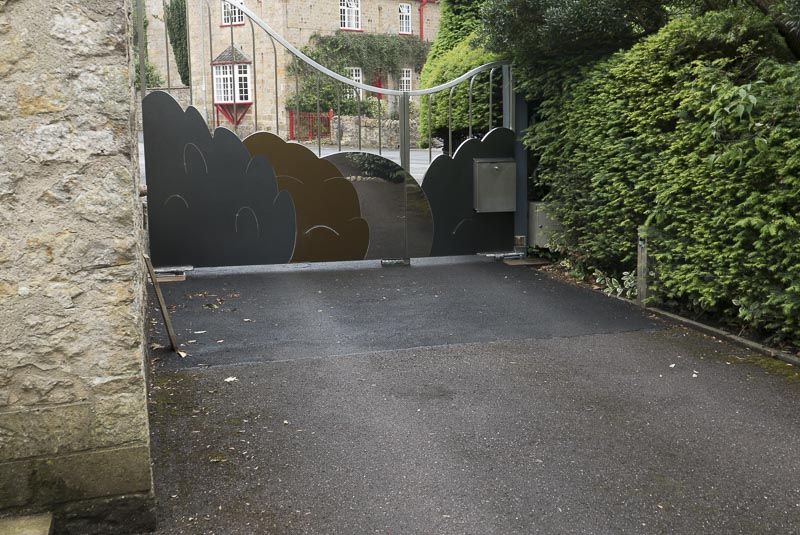
Sometimes they are designed to be both stylish and utilitarian …
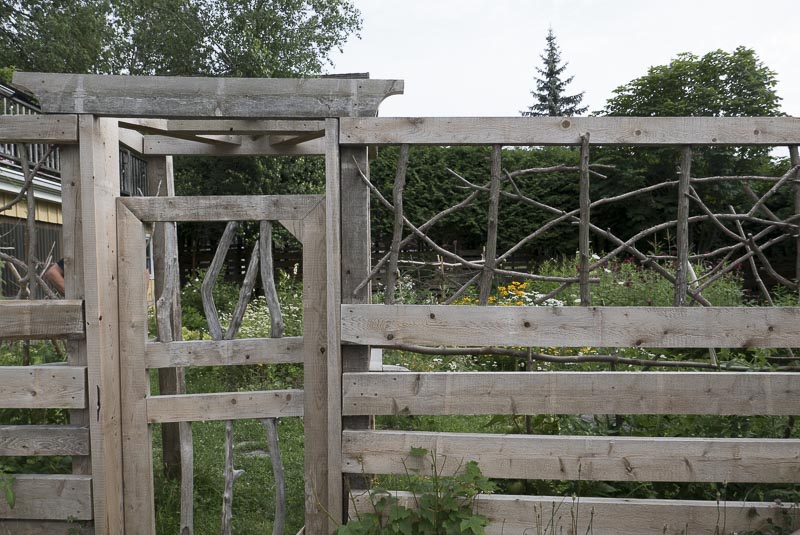
and sometimes to be decorative above all else.

Some gates reflect the culture of a country …
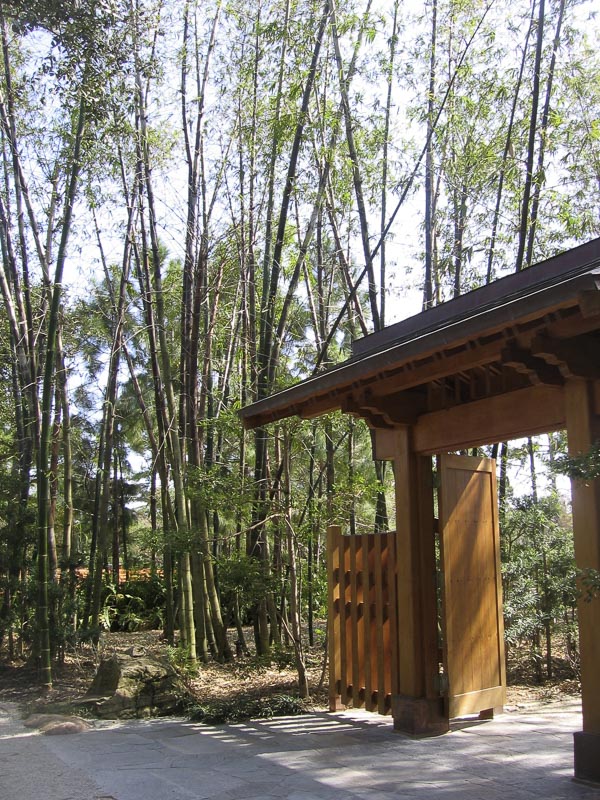
… or the history of the site and the people who lived there.
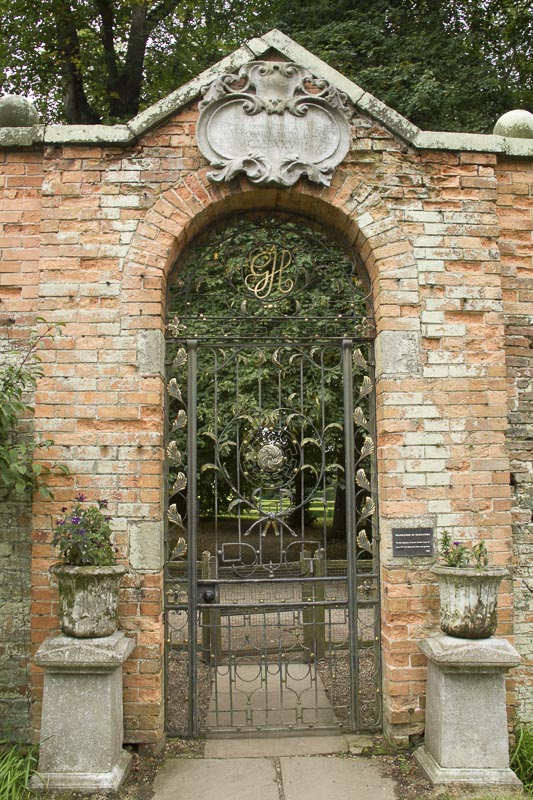
This gate at Castle Howard honours a previous owner.
The variety seems as open-ended as gardens themselves.
Looking back at the hundred gates I posted (you can find these on Instagram, at glen_villa_garden), I am struck by how differently people responded to what they saw. Perhaps I shouldn’t have been surprised. Garden gates give a foretaste of what a garden will deliver, and people look for different things in gardens, different styles, different approaches, different atmospheres. Like art in a garden, the choice itself — the style of the gate, the design, the colour, the placement — signals the values that are important to the garden owner. And like art, when gates are well-sited and used with purpose, they enrich the experience of the garden as a whole.






I enjoyed this round up and have realized my mistake in not following you on Instagram (I am now). I agree with your statement that gates speak to the type of garden beyond, and must share my spiky agave-gate with you…
http://www.thedangergarden.com/2015/10/agavegate.html
I would love to see your spiky agave-gate. I would love to see your garden. I learn a lot about plants that I can’t grow from your posts, and visiting gardens with you vicariously is always fun.
What an excellent array of gates! The theme is a welcome one — I don’t normally look at Instagram, but will take a look at your collection there, too.
Hope you enjoy the Instagram series, Lisa. I’m thinking about what to tackle next and welcome ideas.
What a delight to see these gates and your insightful comments on them. We have a “frog gate” – to celebrate the frogs that give us such pleasure by our lake. I will send a photo if I can figure out how. Warmly,
Susan d’Aquino
Your frog gate is magnificent! Thank you for the photo.
Definitely a book in it…
I think so, too. But when to find the time?
Perennial problem….